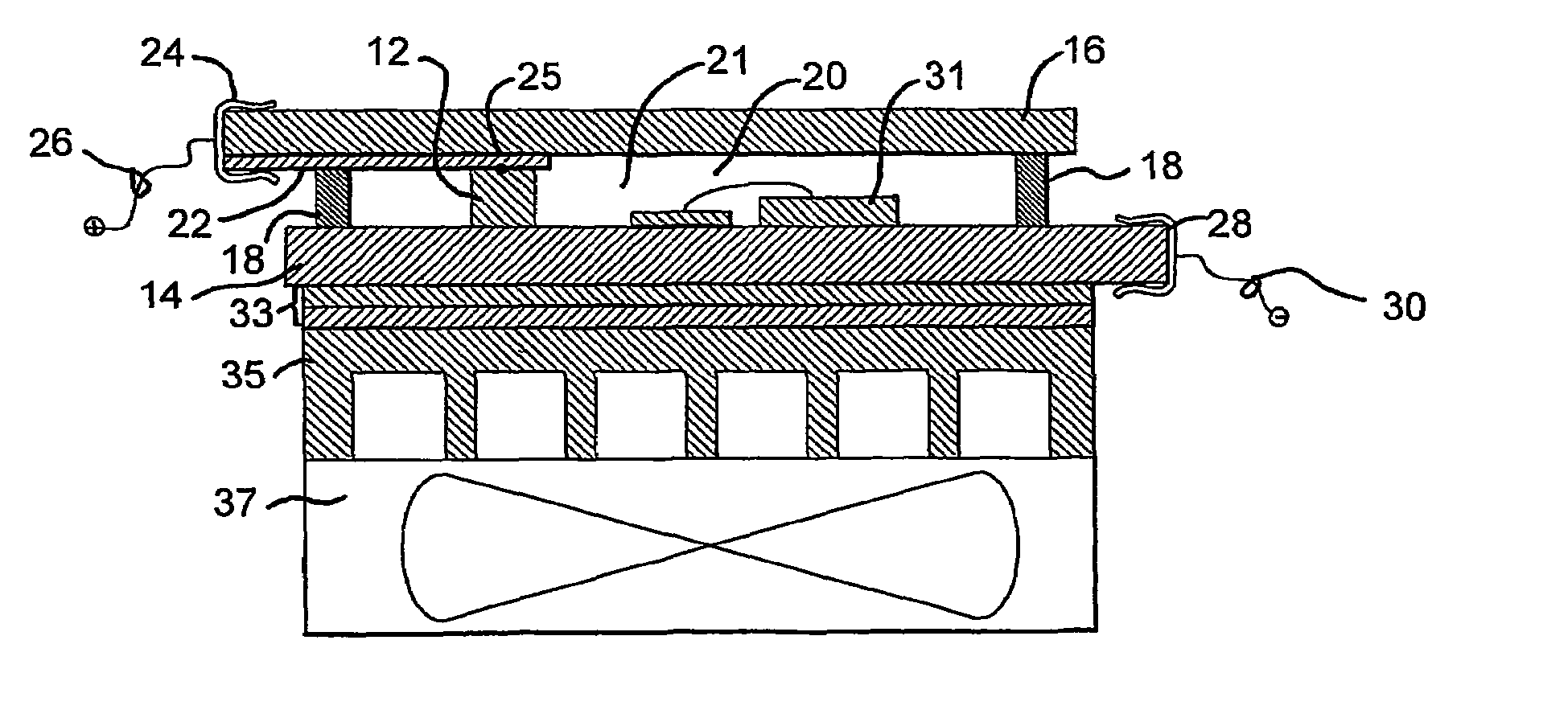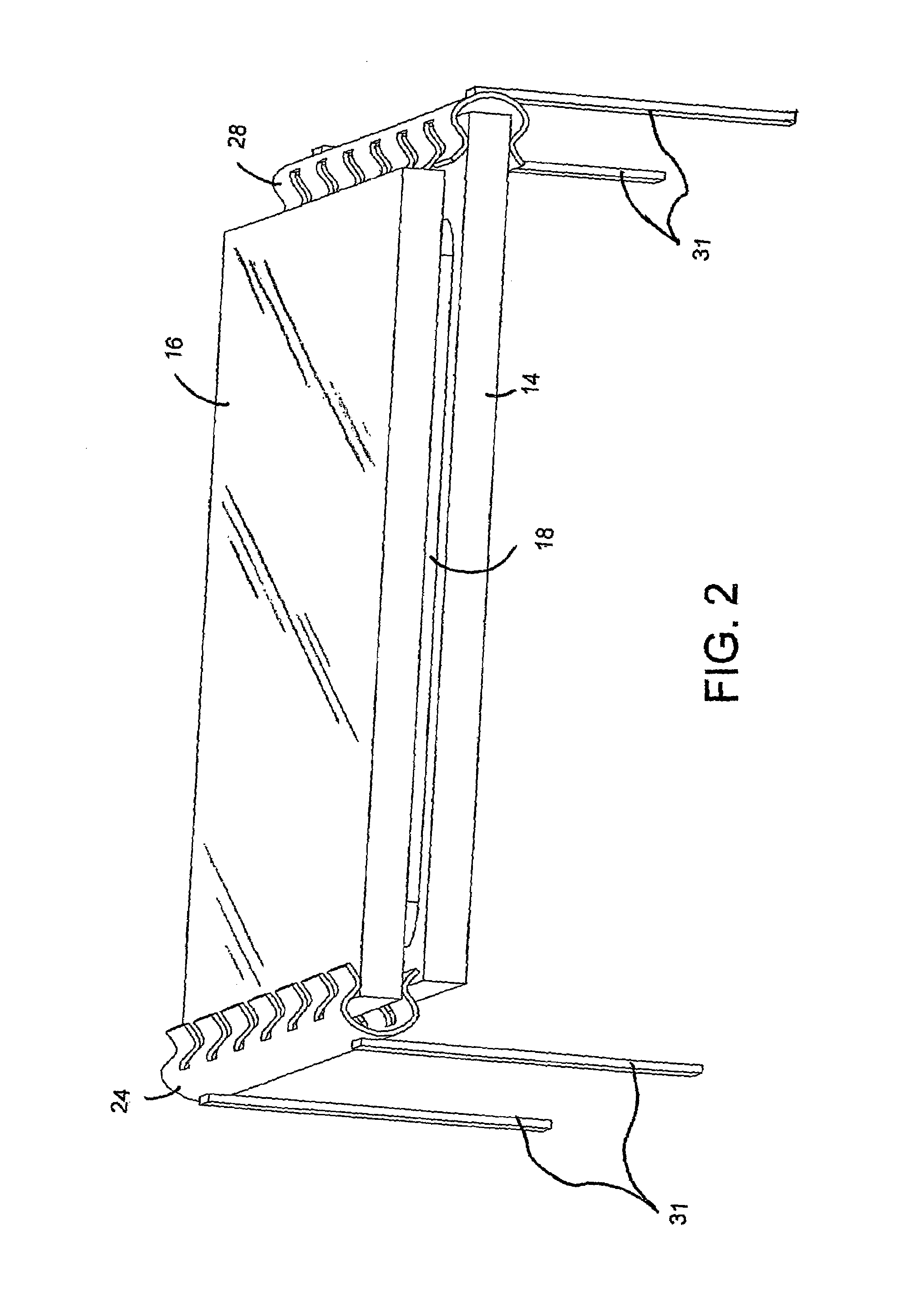High power radiation emitter device and heat dissipating package for electronic components
a radiation emitter and heat dissipation package technology, applied in the direction of instruments, lenses, optical elements, etc., can solve the problems of reducing the emission efficiency of leds, increasing the probability of failure in most conditions, and affecting the efficiency and reliability of leds. normal, the effect of high power density, high radiant flux and/or luminous flux emission
- Summary
- Abstract
- Description
- Claims
- Application Information
AI Technical Summary
Benefits of technology
Problems solved by technology
Method used
Image
Examples
example
[0099]To demonstrate the effectiveness of the present invention, a package assembly was constructed as illustrated in FIGS. 10 and 11 and described above. The structure had a length of approximately 1.5 inches and a width of approximately 1.5 inches, with the external contact pads being approximately 0.25 inch long. To demonstrate the effectiveness of the present invention, the illumination from the device was measured at various power levels prior to filling the sealed chamber 21 with any liquid. Then, the assembly was filled with liquid and plugged and the illuminance was again measured at the same power levels. The results of these measurements are illustrated in FIG. 12, with the illuminance measured in foot-candles at 18 inches. As apparent from FIG. 12, the provision of the liquid in physical and thermal contact with the LEDs improved their performance markedly. The improvement increased as the applied power increased. It should be understood that, for this sample, increased i...
PUM
 Login to View More
Login to View More Abstract
Description
Claims
Application Information
 Login to View More
Login to View More - R&D
- Intellectual Property
- Life Sciences
- Materials
- Tech Scout
- Unparalleled Data Quality
- Higher Quality Content
- 60% Fewer Hallucinations
Browse by: Latest US Patents, China's latest patents, Technical Efficacy Thesaurus, Application Domain, Technology Topic, Popular Technical Reports.
© 2025 PatSnap. All rights reserved.Legal|Privacy policy|Modern Slavery Act Transparency Statement|Sitemap|About US| Contact US: help@patsnap.com



